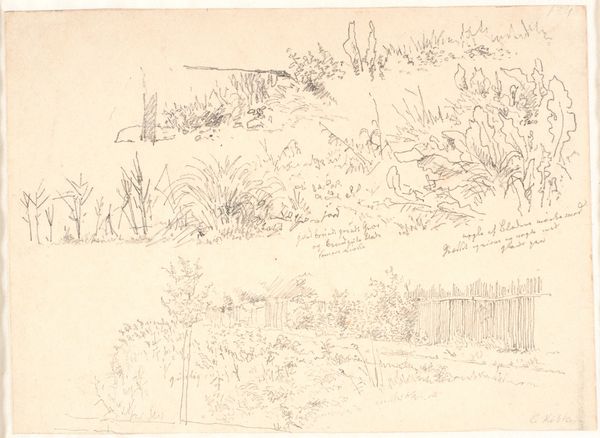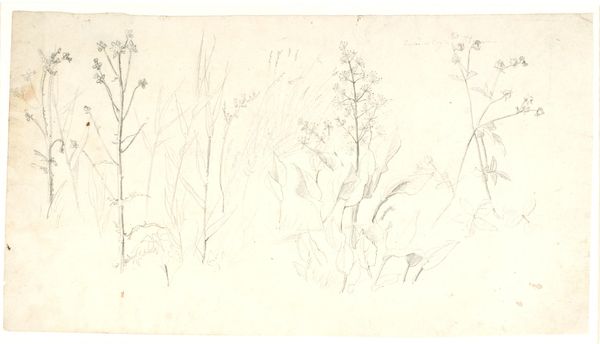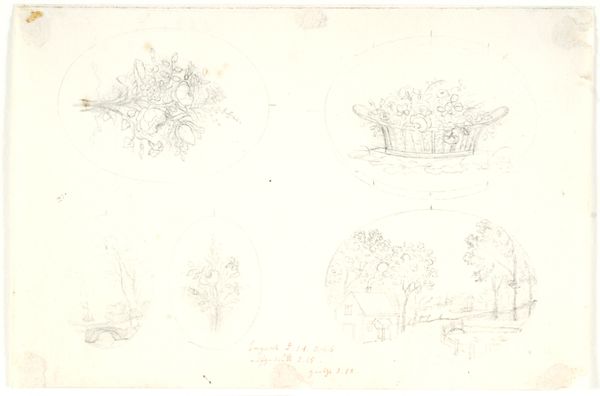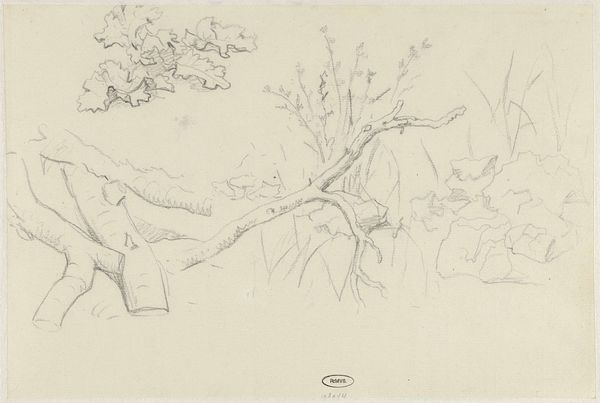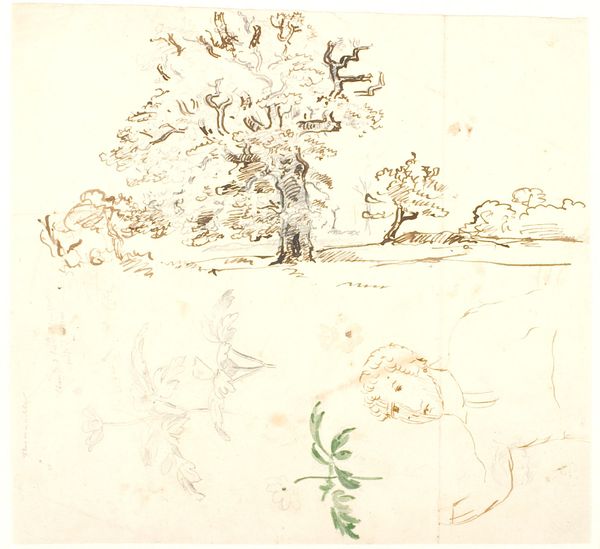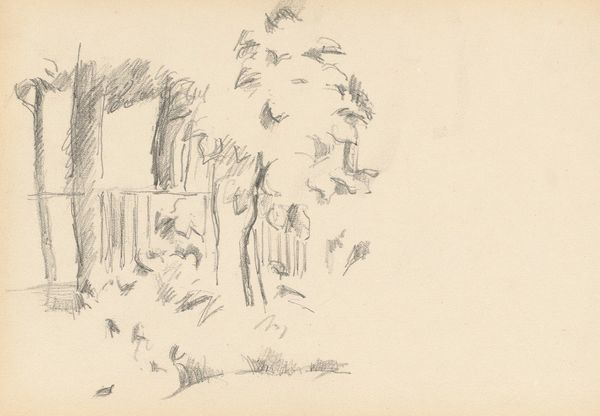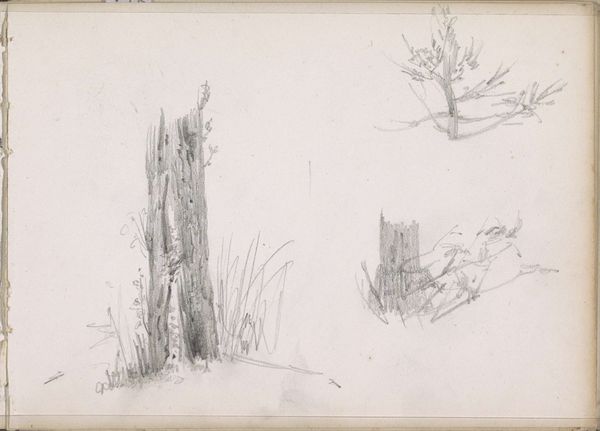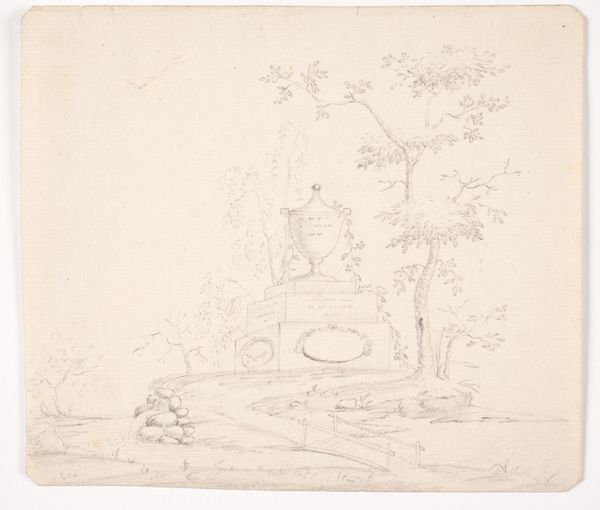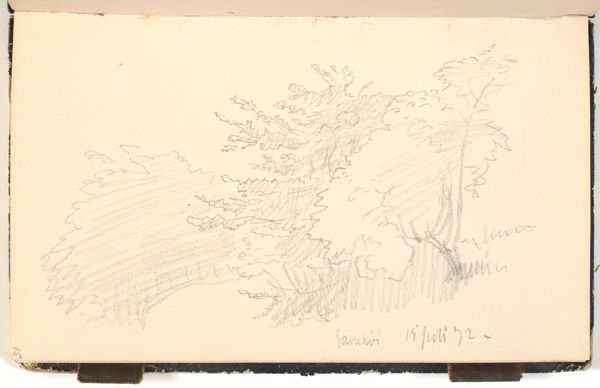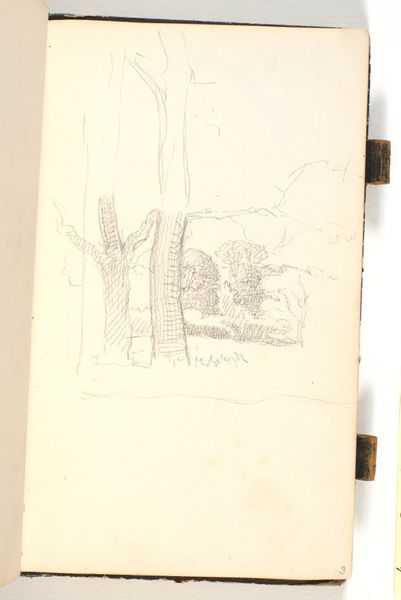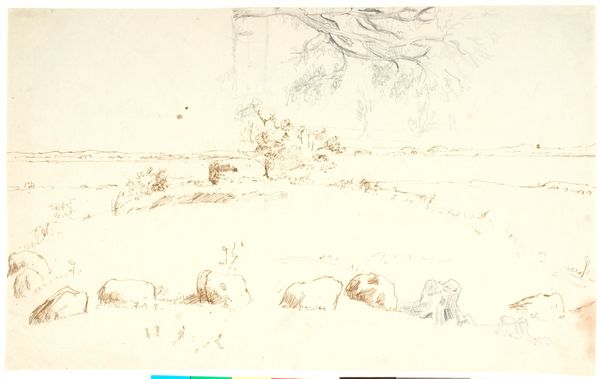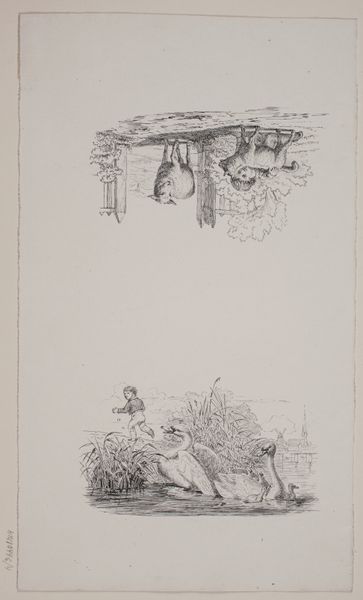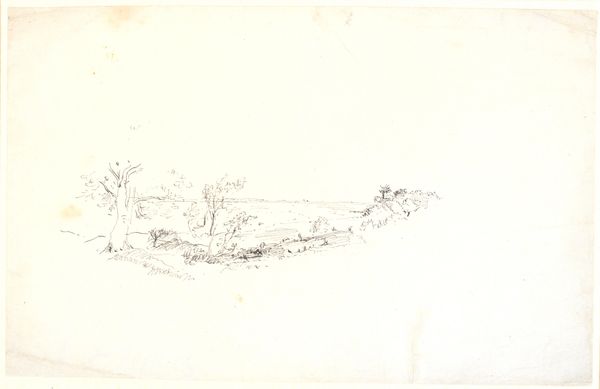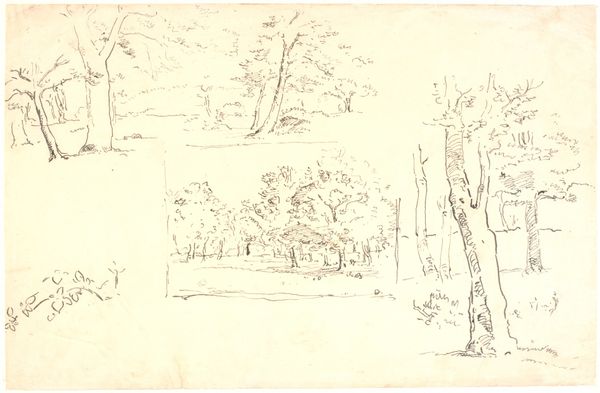
drawing, ink
#
drawing
#
neoclacissism
#
landscape
#
figuration
#
ink
#
geometric
Dimensions: 225 mm (height) x 249 mm (width) (bladmaal)
Curator: This delicate drawing is titled "Architectural Fragments," thought to be from around 1840, by Christen Købke. He's created these scattered images with ink, imbuing them with Neoclassical influences. What are your initial impressions? Editor: Immediately, I'm struck by the juxtaposition. There's a strong sense of decay, a classical ruin overtaken by nature. Those finely rendered botanical details, seemingly sprouting from and consuming the stone, convey an almost melancholic beauty. Curator: Precisely! Købke’s contemporaries were greatly influenced by the rediscovery of classical antiquity. The architectural components, especially the fragment bearing an ornate scroll, symbolize an ideal past, perhaps unreachable or irretrievably lost. There were strong sentiments around national identity being linked to a noble history. Editor: The scroll patterns themselves speak volumes. This stylized wave-like ornamentation connects to broader concepts of the eternal, cycles of life, and the subconscious realm. Note how it’s repeated on the fragmented blocks, suggesting perhaps multiple buildings, or even eras. Curator: Købke positions them artfully. His technique creates a deliberate disorder – challenging classical perfection. One might read into his careful scattering of fragments as representative of Denmark’s sociopolitical struggles, especially relative to other Empires and national identities being shaped at the time. Editor: Indeed, ruins hold so much symbolic power. Here, they embody the inevitable passage of time and the ephemeral nature of human achievement. They become vessels, if you will, capable of absorbing new layers of meaning as civilizations rise and fall. I’m seeing how plants spring up around the remnants of stone like an act of creative resurgence. Curator: Købke does present us with layered perspectives on what can be reclaimed, adapted, and mourned, though he leaves us pondering it on our own. It is as if he challenges the viewer to draw the overarching conclusion. Editor: A potent piece; Købke invites contemplation of time, ruin, and resilience through compelling visual allegories, still relevant even today.
Comments
No comments
Be the first to comment and join the conversation on the ultimate creative platform.
